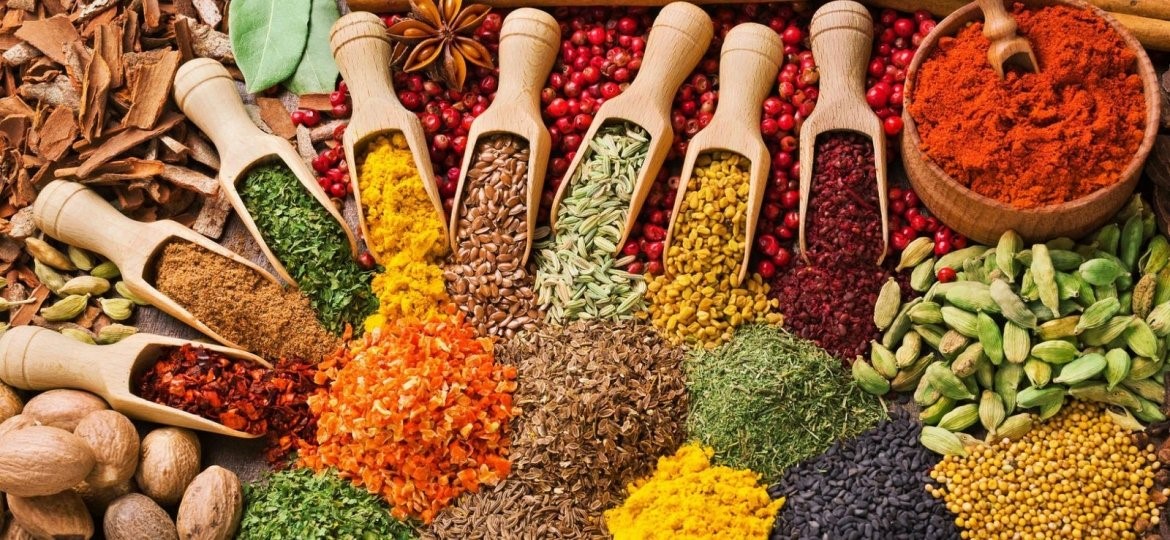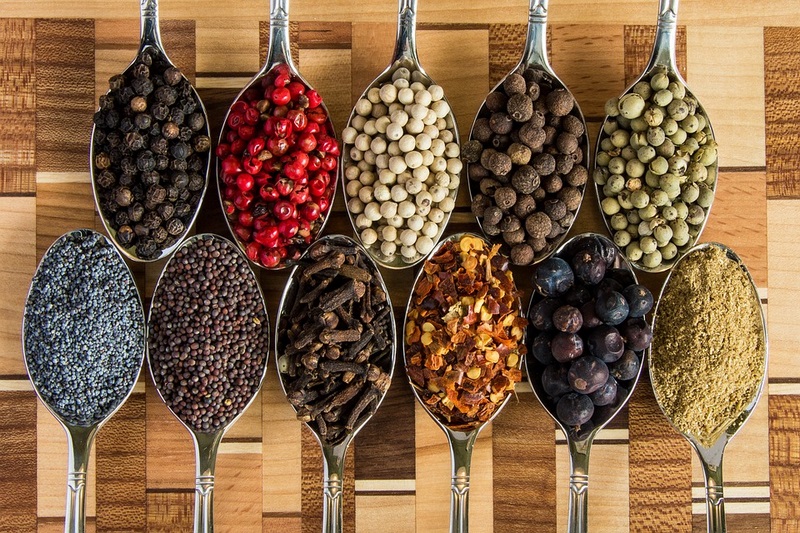Spices

Origins
Plant products derived from different parts of plants (seeds, roots, bark, fruits, leaves).
Main types
- Black pepper: Dried berries of the Piper nigrum plant.
Cinnamon: The bark of trees of the genus Cinnamomum.
Cloves: Dried flower buds from the Syzygium aromaticum tree.
Cardamom: Seeds of plants of the ginger family.
Curcuma: Root of the Curcuma longa plant, used as a powder.
Ginger: Rhizome of the plant Zingiber officinale.
Saffron: The stigmas of the flowers of Crocus sativus.
Nutrients
Essential oils: Give spices their aroma.
Antioxidants: Some spices contain high levels of antioxidants.
Vitamins and minerals: In small amounts, e.g. vitamin C, vitamin K, calcium, iron.

Utilization
- Culinary: To add flavor and aroma to dishes.
Medicine: Used in traditional and folk medicine for their medicinal properties.
Cosmetics: As part of fragrance and care products.
Preservation: Some spices have antiseptic properties and are used for preserving foods.
Production
- Cultivation: Requires specific climatic conditions, most often warm and humid climates.
Collection and processing: May include drying, crushing, extraction of essential oils.
Economic importance
Historical importance: Important commodity in world trade, was the cause of the great geographical discoveries.
Current market: Spices continue to be an important export commodity for many countries, with prices depending on yields, demand and climatic conditions.